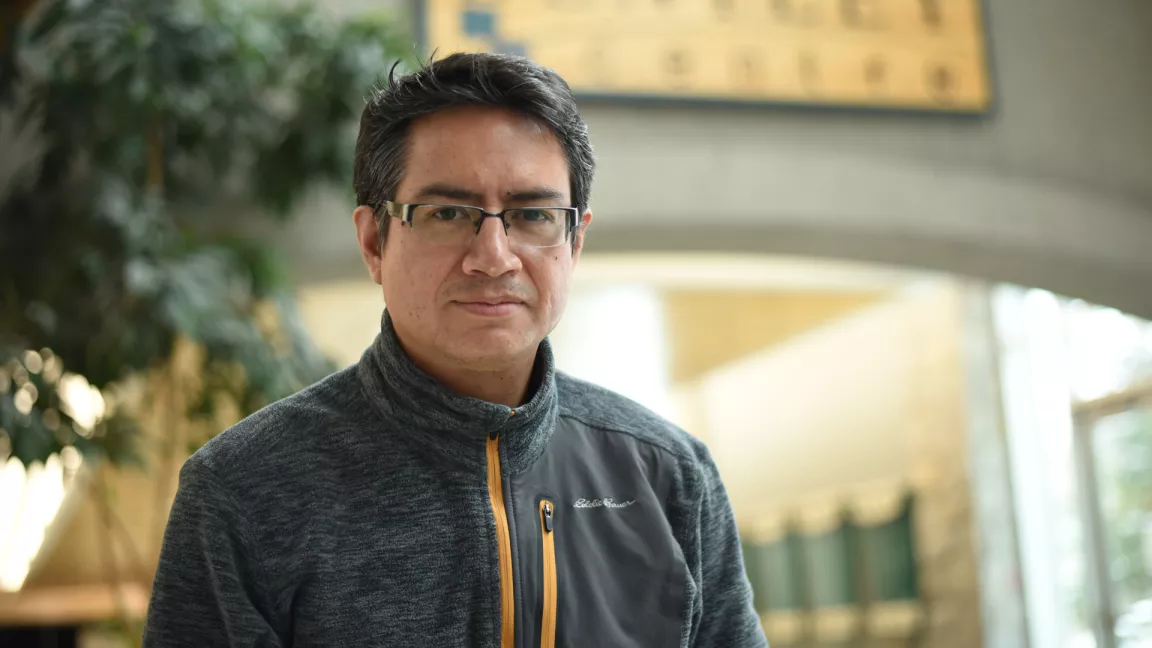Researcher part of team recognized for supporting sustainable development goals
PhD candidate Jose Aragon is working on the Connecting Science to Policy to Strengthen Reporting on SDG15 in Colombia, Ecuador, and Peru project which won a Group on Earth Observations Sustainable Development Goal Award for its work promoting United Nations Sustainable Development Goal 15, Life on Land.

UNBC PhD candidate Jose Aragon is part of an international research team recognized for its work supporting the United Nations sustainable development goals in South America.
Aragon collaborated on a project funded by the National Aeronautics and Space Administration (NASA) that received a Group on Earth Observations (GEO) Sustainable Development Goal Award. The award, in the intergovernmental category, was presented to project partners United Nations Development Program Colombia, United Nations Development Program Ecuador and United Nations Development Program Peru.
The project, Connecting Science to Policy to Strengthen Reporting on SDG15 in Colombia, Ecuador, and Peru, uses mapping tools to better understand both the extent and the quality of forests in these incredibly biodiverse countries.
“The GEO Sustainable Development Goal Award is an acknowledgement of the successful approach of the project,” Aragon says. “It is not common to bring together science teams and three governments into a process over three years of building scientific solutions to current ecological challenges. The results and lessons from the project will be of high value to other initiatives working sustainable development goals.”
Aragon worked with researchers at Northern Arizona University and Montana State University to engage with the ministries of the environment in Peru, Ecuador and Colombia and provide data that will help governments to report and deliver on Sustainable Development Goal 15 Life on Land, in the context of land-use change and climate change.
“Conservation is a hard endeavour. Besides ecological value, many interests including logging, infrastructure, agriculture, tourism, protected areas and cultural sites compete on the same landscapes,” Aragon says. “High-quality forests are strategic territories to focus our conservation efforts on, given they provide refuge for biodiversity, they contain high amounts of carbon sequestered, and provide high levels of ecosystem services.”
Through regular monthly meetings and training sessions, Aragon and the students in Arizona and Montana played a key role in linking the science groups and the technical teams from the three participating countries.
“This is a commendable example of cross-sectoral and cross-country collaboration among organizations and communities from government, academia, the United Nations, and other stakeholders to develop and validate the broad use of effective Earth observation-based methods and data for more effective monitoring and implementation of SDG 15 targets,” says Dr. Argyro Kavvada, Executive Director, Earth Observations for Sustainable Development Goals Initiative. “It also strongly aligns with GEO’s principles of full and open access to Earth observation data, information, and knowledge to address some of the most pressing social, economic, and environmental challenges.”
The GEO SDG Awards, launched in 2019, celebrates productivity, innovation, novelty, and exemplary efforts in the use of Earth observations to support sustainable development. The recognition provided by the award has the potential to support international efforts advocating for better targets and indicators on biodiversity both for Sustainable Development Goal 15 and for the new global framework for nature that will be agreed upon in 2022 by countries Party to the UN Biodiversity Convention.
Aragon is progressing towards his PhD in Natural Resources and Environmental Studies under the supervision of Landscape Conservation and Management Professor Dr. Oscar Venter. While his project is focused on South America, Aragon says the principles of protecting quality forests apply around the globe.
“Here in British Columbia, we should be aware of the importance and irreplaceability of old-growth forests,” he says.